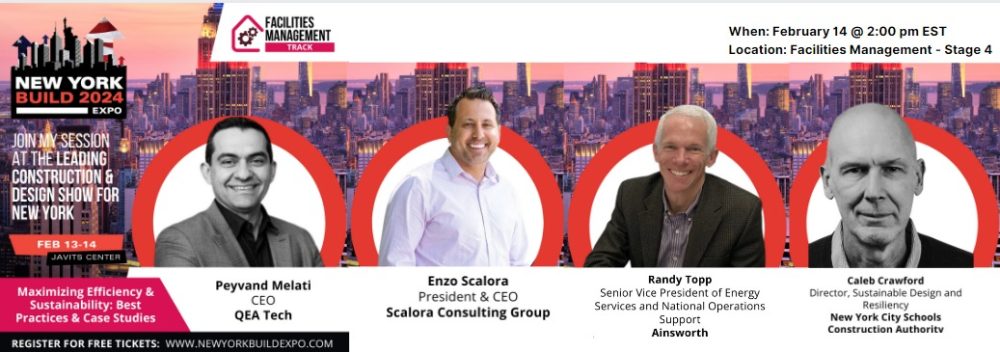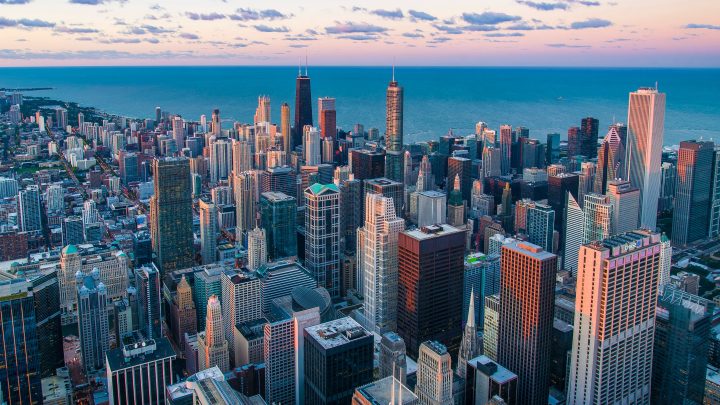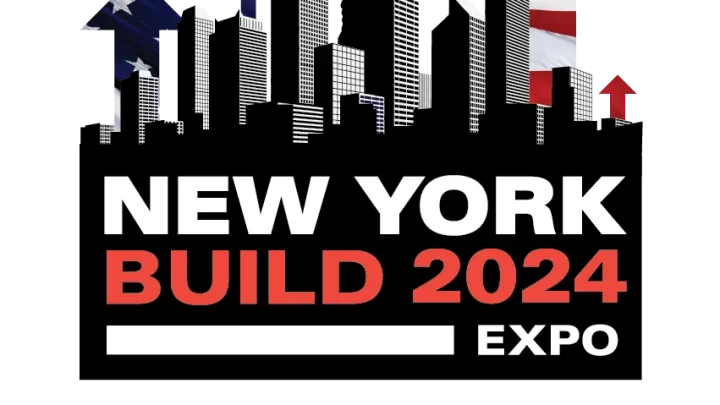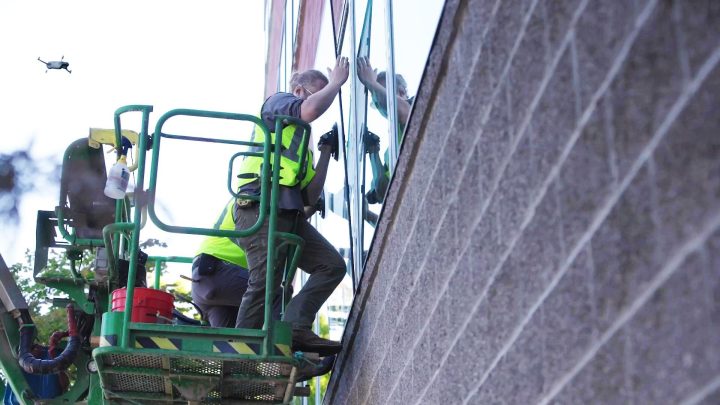
50% of total energy use and 40% of GHG emissions are attributed to buildings globally. New York City and its 3 billion square feet of existing building space are no different, with buildings accounting for approximately two-thirds of the city’s GHG emissions.[1] This isn’t surprising considering most of New York City’s buildings were constructed prior to the first energy regulations in the 1970s. As a result, New York is taking action on decarbonizing and meeting urgent climate goals in the built environment.
For example, New York State Energy Research and Development Authority’s (NYSERDA) New Efficiency: New York report sets out multiple energy efficiency focused strategies, including advancing net zero energy new construction, annual energy benchmarking, and accelerating retrofits. All of this aims to have New York reduce emissions by 85% by 2050 compared to 1990 levels.[2]
NYSERDA also has several programs that provide clean energy incentives and financing for energy efficiency improvements. These include the Flexible Technical Assistance (FlexTech) Program that provides financial support for the completion of energy studies that identify opportunities to reduce energy costs and incorporate clean energy, and the On-Site Energy Manager Program, in which NYSERDA will cost-share a percentage of fees for hiring a dedicated on-site energy manager.[3]
Moreover, NYC Local Law 97 went into effect on January 20th of this year and will penalize building owners that emit excessive greenhouse gas emissions. The law applies to 50,000 buildings in New York City that are over 25,000 square feet and will penalize building owners $268 per ton of CO2e over a building’s limit, with emissions standards getting progressively stricter each year.[1]
The Building Envelope is Central to Achieving Energy Efficiency
The building envelope accounts for 30% of the primary energy consumed in residential and commercial buildings, making it a critical factor in the energy consumption and comfort levels of buildings.[4] Building envelope design is critical in determining the service demand for heating and cooling as well as identifying a building’s embodied carbon impact, making high-performing envelopes one of the most effective ways to reduce the thermal needs of a building. Retrofits are essential to realizing these envelope savings, improving the overall energy efficiency of a structure and reducing air leakage.
New York Buildings Undertaking Retrofits
More and more buildings in New York are taking on retrofits. For example, 345 Hudson Street is in the midst of upgrading to new carbon efficient and energy saving technologies, with the aim of decarbonizing the 1 million square foot property by 2032.[5] These changes will help the property owners save on what could have been fines in the range of six figures due to Local Law 97.
Casa Pasiva is a $20 million retrofit project in the Bushwick neighborhood with the aim of sustainably transforming the city’s aging housing stock.[6] Retrofits include barriers to prevent airflow and rigid insulation panels. With a thicker, airtight, and watertight façade, tenants will benefit from not only energy savings but also improved air quality, less noise, and fewer mold issues.
Additionally, in April 2023, QEA Tech completed in depth building envelope energy audits for 42 branches of Brooklyn Public Libraries. Over 500,000 square feet of diverse building architectures, ages of construction, and building envelope materials were evaluated. Over 17,000 thermal images were captured and analyzed through QEA Tech’s proprietary AI software. As a result, QEA Tech was able to identify the energy and cost savings potential through the building envelope, the amount of CO2e that could be avoided with retrofits, and the primary envelope issues causing energy loss.
Join us at New York Build Expo from Feb 13-14
To learn more about the progress made so far and further steps needed to drive energy efficiency in New York’s buildings, join QEA Tech at New York Build Expo’s Facilities Management Stage (stage 4) on February 14 at 2:00pm EST where we will be discussing best practices and case studies for maximizing efficiency and sustainability within facilities. We would also appreciate the opportunity to chat at our booth (#225) throughout the event.
References
[1] MSN. (n.d.). https://www.msn.com/en-us/money/realestate/new-york-jump-starts-the-building-decarbonization-trend/ar-AA1mGA2n
[2] NYSERDA. (n.d.). https://www.nyserda.ny.gov/Impact-Energy-Efficiency-and-Building-Decarbonization
[3] Put energy to work. NYSERDA. (n.d.-b). https://www.nyserda.ny.gov/PutEnergyToWork/Energy-Program-and-Incentives/Building-Operations-Performance-Programs-Incentives
[4] Building envelope. Building Envelope | Better Buildings Initiative. (n.d.). https://betterbuildingssolutioncenter.energy.gov/building-envelope
[5] Could New York City become the Beacon of energy efficiency?. World Economic Forum. (2023, September 26). https://www.weforum.org/agenda/2023/09/new-york-city-beacon-energy-efficiency/
[6] Sisson, P. (2020, December 29). New York’s Real Climate Challenge: Fixing its aging buildings. The New York Times. https://www.nytimes.com/2020/12/29/business/new-york-passive-house-retrofit.html


